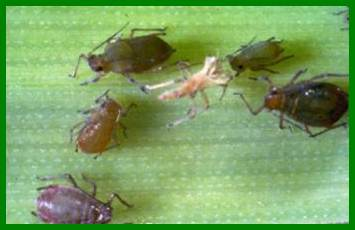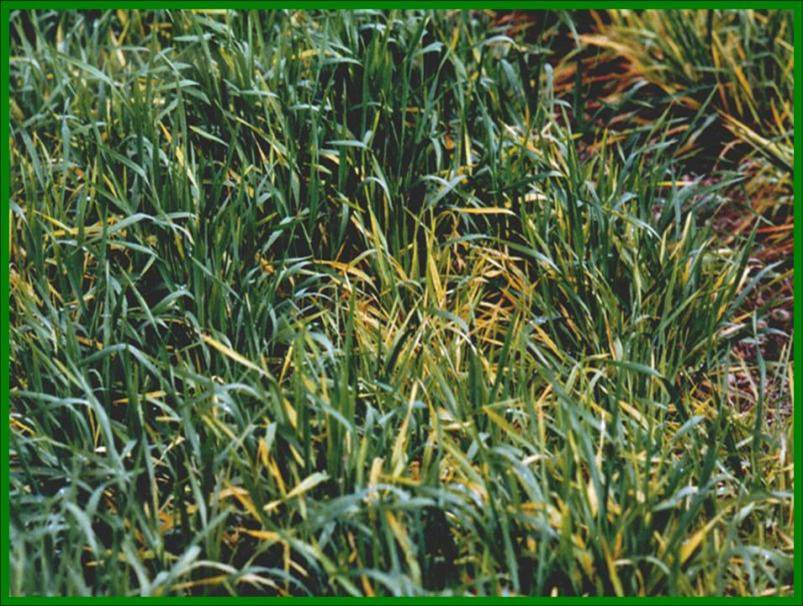Aphid vectors
In Western Australia, the virus is spread mainly by the oat (Rhopalosiphum padi) and the corn leaf (Rhopalosiphum maidis) aphids. The oat aphid is the most important; it feeds on wheat, barley, oats and grasses. The corn leaf aphid usually only feeds on barley and some grasses. Other minor aphid vectors include the grain aphid (Sitobion sp.) and two cereal root aphids (Rhopalosiphum insertum and Rhopalosiphum rufiabdominalis); whereas Russian wheat aphid (Diuraphis noxia) is a poor vector.

Symptoms
Symptoms of BYDV and CYDV can be confused with those caused by nutrient deficiencies, waterlogging or other plant stresses that cause yellowing, reddening and striping of leaves. Leaf symptoms differ between wheat, oats and barley. The severity depends on the age of the plant at infection, environmental conditions, the virus present and the cereal variety involved.
Wheat
Infected wheat plants develop a slight to severe yellowing or pale striping between veins (interveinal chlorosis) in young leaves. Leaf tips can also die (necrosis). Reddening of the leaf tips (particularly of the flag leaf) can often be seen and is the most characteristic symptom of virus infection in wheat. If a sensitive variety is infected before tillering, the plant is usually stunted, has fewer tillers and more sterile ones. Grain matures early, yield is greatly reduced and grain is shrivelled. Effects are milder with a late infection.

Barley
In barley, infection causes a characteristic bright yellowing of the leaves (particularly older leaves) and pale yellow stripes between the leaf veins plus chlorotic blotching of young leaves. In some varieties, reddening of leaf tips also develops. Early infected barley plants are stunted and produce low grain yields and shrivelled grain. Tillering can be stimulated by infection, but most tillers then develop poorly and produce sterile heads. Plants infected after tillering have milder symptoms and yields are less severely affected.

Oats
In oats, the symptoms of BYDV infection are very striking. Most varieties develop reddening (crimson-pink) of the leaves from the tips down, which sometimes begins as blotching especially on older leaves. Young leaves often have yellow stripes. However, some varieties only develop a yellow/orange coloration. Stunting, an increase in sterile tillers or abortion of florets result in low grain yields and shrivelled grain. As in wheat and barley the effect of virus is greatest in early-infected plants.

Grasses
There are no obvious symptoms of virus infection in many grasses (for example, kikuyu grass). However, some grasses (for example, annual and perennial ryegrasses) may develop reddening or purpling of leaf tips while others (for example, Phalaris) may develop yellowing of older leaves.
